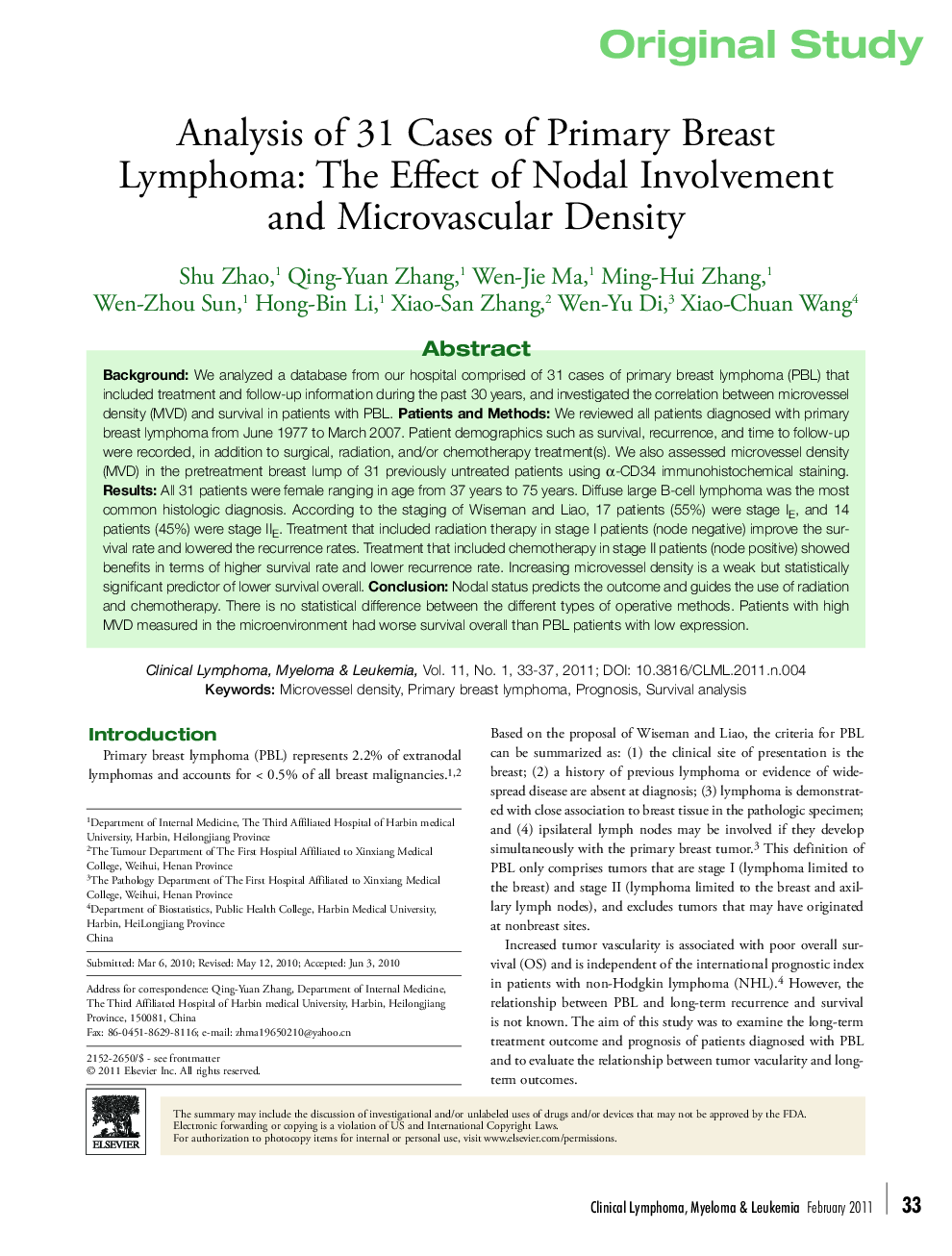| Article ID | Journal | Published Year | Pages | File Type |
|---|---|---|---|---|
| 2755087 | Clinical Lymphoma Myeloma and Leukemia | 2011 | 5 Pages |
Background:We analyzed a database from our hospital comprised of 31 cases of primary breast lymphoma (PBL) that included treatment and follow-up information during the past 30 years, and investigated the correlation between microvessel density (MVD) and survival in patients with PBL.Patients and Methods:We reviewed all patients diagnosed with primary breast lymphoma from June 1977 to March 2007. Patient demographics such as survival, recurrence, and time to follow-up were recorded, in addition to surgical, radiation, and/or chemotherapy treatment(s). We also assessed microvessel density (MVD) in the pretreatment breast lump of 31 previously untreated patients using α-CD34 immunohistochemical staining.Results:All 31 patients were female ranging in age from 37 years to 75 years. Diffuse large B-cell lymphoma was the most common histologic diagnosis. According to the staging of Wiseman and Liao, 17 patients (55%) were stage IE, and 14 patients (45%) were stage IIE. Treatment that included radiation therapy in stage I patients (node negative) improve the survival rate and lowered the recurrence rates. Treatment that included chemotherapy in stage II patients (node positive) showed benefits in terms of higher survival rate and lower recurrence rate. Increasing microvessel density is a weak but statistically significant predictor of lower survival overall.Conclusion:Nodal status predicts the outcome and guides the use of radiation and chemotherapy. There is no statistical difference between the different types of operative methods. Patients with high MVD measured in the microenvironment had worse survival overall than PBL patients with low expression.
